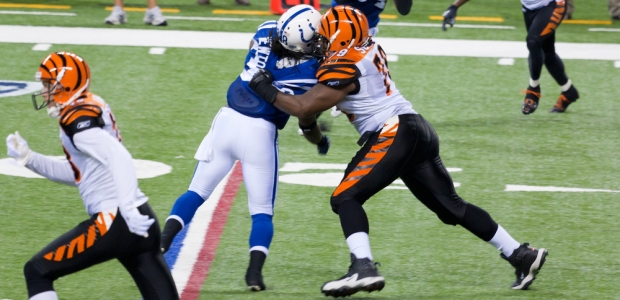
Retired NFL Players Not at Greater Suicide Risk, Study Finds
NIOSH researchers found that from 1979 to 2013, the suicide rate among those former players was less than half of what would be expected compared with the general population: The NFL group experienced 12 suicide deaths, compared with 25 that would be expected in a comparable gender/race/age sector of the population.
A newly published NIOSH study finds retired National Football League players are at no greater risk of suicide when compared with the general U.S. population. The study findings were published in the May issue of the American Journal of Sports Medicine and announced by CDC on May 10.
According to the agency, NIOSH researchers calculated the suicide death rate for 3,439 retired NFL players who played at least five seasons between 1959 and 1988 and compared it with the suicide death rate for gender-, race-, and age-matched people from the general U.S. population. They found that from 1979 to 2013, the suicide rate among those former players was less than half of what would be expected compared with the general population: The NFL group experienced 12 suicide deaths, compared with 25 that would be expected in a comparable gender/race/age sector of the population.
"The issue of football players being at higher risk of suicide than the general population has been raised in the popular and scientific literature," said Dr. Douglas Trout, M.D., deputy director of the Division of Surveillance, Hazard Evaluations and Field Studies at NIOSH. "In studying this particular cohort of professional football players, our researchers did not find this to be the case; more studies are needed before further conclusions can be reached."
The research divided players into two categories, a decision based on previous information suggesting different risks for different positions. They were divided into speed positions (such as quarterback, fullback, running back, and wide receiver) and non-speed positions (which included all defensive and offensive linemen). Punters and kickers were excluded from the analysis because their positions generally do not involve contact that results in head injury.
"Fifty-eight percent of the suicide deaths were white players and 42 percent were black players, virtually equal to their representation in the entire group (59 percent white, 41 percent African American). The rate of suicide, or 'intentional self-harm,' was significantly lower in former NFL speed-position players compared with the general U.S. population. The suicide rate for non-speed-position players was lower than that of the general population, but the difference was not mathematically significant. There were also significantly fewer overall deaths from cancer, heart disease, and assaults/homicides among the former NFL players than in the general population," CDC reported, adding that it conducted the study to learn more about whether football players, who are at a higher risk of concussions than the general U.S. population, might also have a higher risk of suicide.
The study has several limitations: Records available to the researchers did not include information such as environmental or genetic factors related to suicide risk or specific information about concussions among the players in the group they studied. NIOSH first began to study the deaths of retired NFL players in 1994 after a request from the NFL Players Association and has published two other studies for this group about death from cardiovascular disease and from neurodegenerative disease.